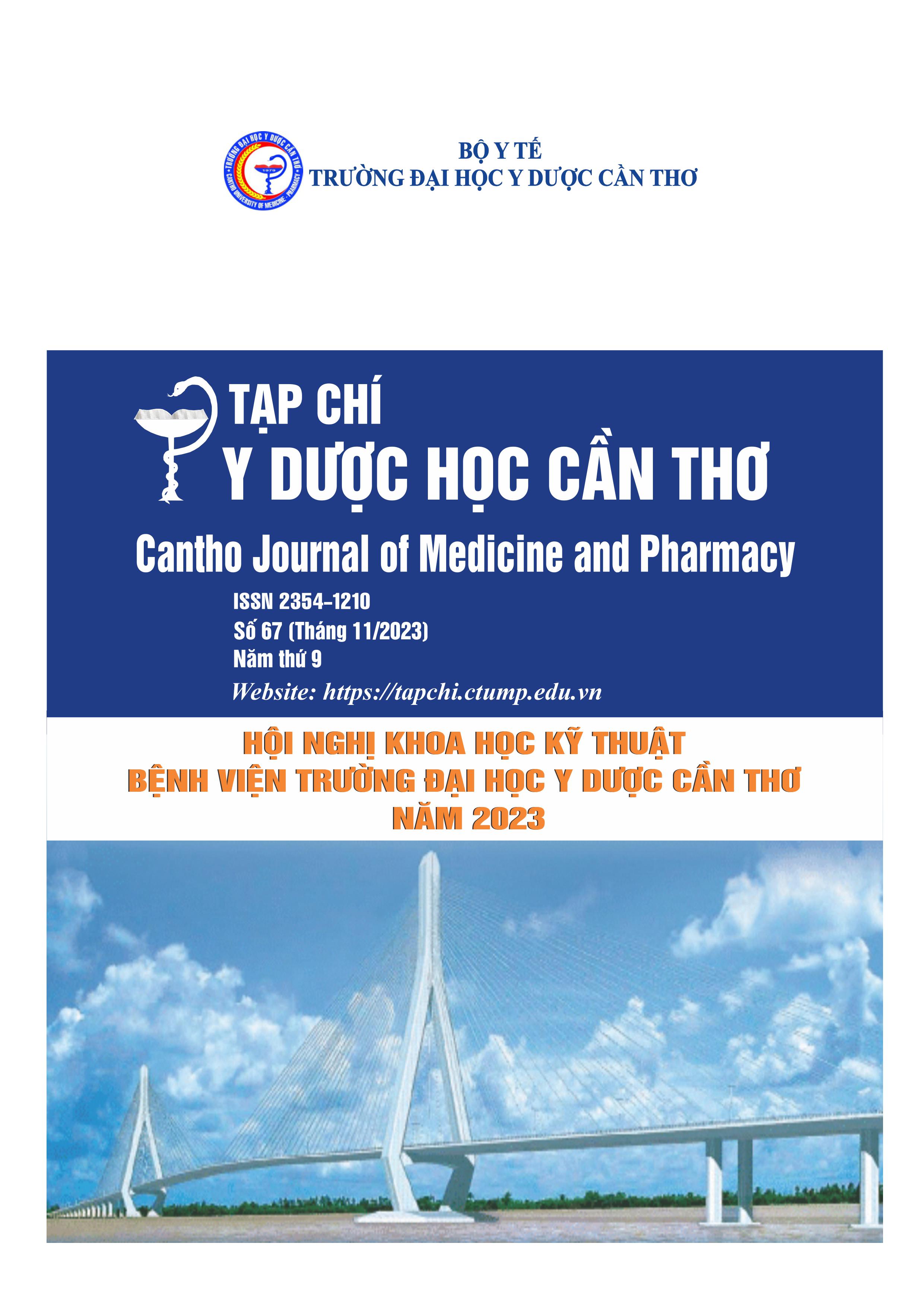A STUDY OF THE SACROILIAC JOINT PARAMETERS ON ABDOMINAL COMPUTED TOMOGRAPHY AND ITS APPLICATION IN SACROILIAC FRACTURE – DISLOCATION TREATMENT
Main Article Content
Abstract
Background: Computed tomography is considered the gold standard in diagnosis and treatment plan of sacroiliac joint (SIJ) dislocation-fractures. However, determining the position, orientation, and length of bone fixation devices of these injuries always cause difficulties for the surgeon. Objectives: Measuring the parameters of SIJ on the abdominal computed tomography images. Materials and methods: The study was conducted on 313 abdominal computed tomography images of the patients who pelvis have no lesions or abnormalities in the pelvis, we measured the parameters of SIJ. Results: Thickness of the ala sacrum in men: 37.4 ± 4.5 mm, female: 34.3 ± 3.6 m. The anteroposterior thickness of the iliac part adjacent to the SIJ in men: 63.6 ± 4.3 mm, in women: 59.7 ± 5 mm. The angle of screw at the front part of the iliac wing closed to the SIJ in men: 26.7o ± 4.2, women: 25.1o ± 4.5. The length of the posterior compression plate in men: 150.8 ± 8.5 mm, female: 152.2 ± 7.9 mm. The length of one-sided SIJ screw in male: 69.7 ± 4.3mm, female: 68.4 ± 4.1mm. The angle of screw in men: 79.6 ± 5.7, women: 77.2 ± 5.9, the length of the SIJ screw on both sides: 168.9 ± 10.5 mm, female: 165.4 ± 10.6 mm. Conclusion: The SIJ parameters can be clinically applied: the length of ala sacral screws was 37 – 38 mm for men and 34 - 35mm for women. The length of screws at the iliac part adjacent to the SIJ and screw angle were respectively: men 63 – 64 mm and 730 - 740 compared to the horizontal plane of the iliac wing adjacent the SIJ; women 59 – 61 mm and 750 anteroposterior. The length of compression plates was 12 - 14 holes. The length of screws for fixing the SIJ was 65 - 70 mm and the screw angle was about 800 compared to the outer plane of the iliac joint adjacent to the SIJ.
Article Details
Keywords
Sacroiliac joint, dislocation – fracture sacroiliac joint, SIJ screw, computed tomography
References
2. Etlik Ö., Temizöz O., Doğan A., et al. (2018). Three-Dimensional Volume Rendering Imaging in Detection of Bone Fractures. Electron J Gen Med, 1(4), 48–52, doi: org/10.29333/ejgm/82230
3. Cieslak J.A., Jazmati T., Patel A., et al. (2020). Trauma CT evaluation prior to selective angiography in patients with traumatic injuries: negative predictive power and factors affecting its utility. Emerg Radiol, 27(5), 477–486. doi:10.1007/s10140-020-01779-0
4. Yun S.J., Jin W., Yoon S.H., et al. (2016). Diagnostic performance of abdominal CT for diagnosis of pelvic fractures: comparison with pelvic CT. Acta Radiol, 57(10), 1244–1250, doi: 10.1177/0284185115626473.
5. Gansslen A. and Lindahl J. (2021). Fracture Dislocations of the SI joint. Pelvic Ring Fractures. 1, Springer US, Switzerland, 337–391. doi:10.1007/978-3-030-54730-1_30
6. Suzuki T, Hak DJ, Ziran BH, et al. Outcome and complications of posterior transiliac plating for vertically unstable sacral fractures. Injury. 2009 Apr;40(4):405–409, doi:
10.1016/j.injury.2008.06.039.
7. Cai L., Zhang Y., Zheng W., et al. (2020). A novel percutaneous crossed screws fixation in treatment of Day type II crescent fracture–dislocation: A finite element analysis. J Orthop Transl, 20, 37–46, doi: 10.1016/j.jot.2019.08.002
8. Elkady R.H., Abuelkhair MD H., and El-Aidy MD S. (2020). Closed Reduction and Internal Fixation of Day II and III Crescent Fractures by Iliosacral Screw. Am Res J Orthop Traumatol, 5(1), 1–5, doi:10.21694/2572-2964.20005
9. Zhao Y., Li J., Wang D., et al. (2012). Parameters of lengthened sacroiliac screw fixation: a radiological anatomy study. Eur Spine J, 21(9), 1807–1814, doi: 10.1007/s00586-012-2367-z
10. Cronin K.J., Hockensmith L., Hayes C.B., et al. (2019). Are Routine Postoperative Computer Tomography Scans Warranted for All Patients After Operative Fixation of Pelvic Ring Injuries?. J Orthop Trauma, 33(10), e360–e365, doi: 10.1097/BOT.0000000000001548.


